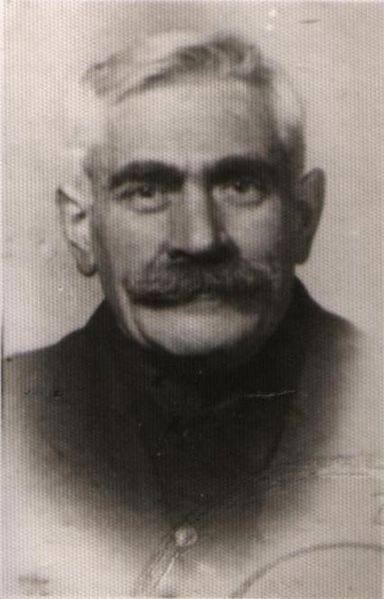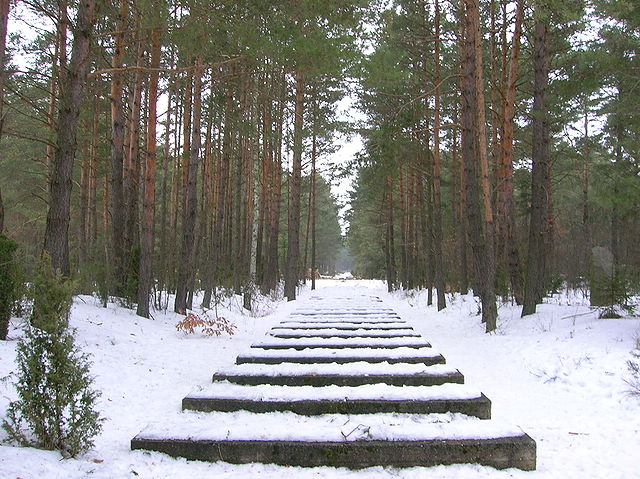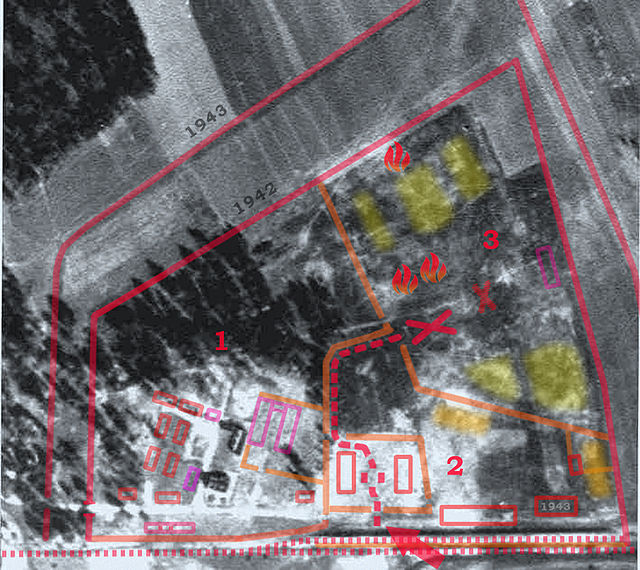Jankiel Wiernik was a Polish-Jewish Holocaust survivor who was an influential figure in the Treblinka extermination camp resistance. He had been forced to work as a Sonderkommando slave worker there, where an estimated 700,000–900,000 people, mostly Jews, were murdered. After his escape during the uprising of 2 August 1943, Wiernik reached Warsaw and joined the resistance. He also wrote a clandestine account of the camp's operation, A Year in Treblinka, which was copied and translated for printing in London and the US in English and Yiddish.
Jankiel Wiernik
Counterfeit Kennkarte of Jankiel Wiernik under the assumed name of Jan Smarzyński.
Jankiel Wiernik building a model of the Treblinka death camp
Treblinka extermination camp
Treblinka was the second-deadliest extermination camp to be built and operated by Nazi Germany in occupied Poland during World War II. It was in a forest north-east of Warsaw, 4 km (2.5 mi) south of the village of Treblinka in what is now the Masovian Voivodeship. The camp operated between 23 July 1942 and 19 October 1943 as part of Operation Reinhard, the deadliest phase of the Final Solution. During this time, it is estimated that between 700,000 and 900,000 Jews were murdered in its gas chambers, along with 2,000 Romani people. More Jews were murdered at Treblinka than at any other Nazi extermination camp apart from Auschwitz-Birkenau.
Concrete blocks marking the path of the former railway spur at Treblinka
Official announcement of the founding of Treblinka I, the forced-labour camp
Memorial at Treblinka II, with 17,000 quarry stones symbolising gravestones. Inscriptions indicate places of Holocaust train departures, which carried at least 5,000 victims each, and selected ghettos from across Poland.
The 1944 aerial photo of Treblinka II after efforts at "clean-up", or disguising its role as a death camp. The new farmhouse and livestock building are visible to the lower left. The photograph is overlaid with outlines of already-dismantled structures (marked in red/orange). On the left are the SS and Hiwi (Trawniki) guards' living quarters (1), with barracks defined by the surrounding walkways. At the bottom (2) are the railway ramp and unloading platform (centre), marked with the red arrow. The "road to heaven"







